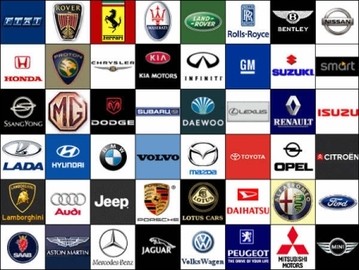Willys-Overland
1908 - 1953 | Brand
In 1908, John Willys bought the Overland Automotive Division of Standard Wheel Company and in 1912 renamed it Willys-Overland Motor Company. From 1912 to 1918, Willys was the second largest producer of automobiles in the United States after Ford Motor Company. Willys-Overland was one of several bidders when the War Department sought an auto maker that could begin rapid production of a lightweight truck based on a design by American Bantam.
In 1952 Willys re-entered the car market with a new compact car, the Willys Aero. At first available only as a two-door sedan, it was available with either an L-head or F-head six-cylinder engine. Export markets could get the Aero with a four-cylinder engine. A four-door sedan and a two-door hardtop were added for 1953 along with taxi models. The Aero cars were called Lark, Wing, Falcon, Ace or Eagle depending on year, engine and trim level, except for a small production run in its final year (1955) with models called Custom and Bermuda. The bodies for the Willys Aero were supplied by the Murray Body company, which also made the bodies for the short-lived Hudson Jet. Also in 1952, CJ3B Jeeps went into production. By 1968, over 155,000 were sold.
Subject ID: 4635
MoreIn 1908, John Willys bought the Overland Automotive Division of Standard Wheel Company and in 1912 renamed it Willys-Overland Motor Company. From 1912 to 1918, Willys was the second largest producer of automobiles in the United States after Ford Motor Company. Willys-Overland was one of several bidders when the War Department sought an auto maker that could begin rapid production of a lightweight truck based on a design by American Bantam.
In 1952 Willys re-entered the car market with a new compact car, the Willys Aero. At first available only as a two-door sedan, it was available with either an L-head or F-head six-cylinder engine. Export markets could get the Aero with a four-cylinder engine. A four-door sedan and a two-door hardtop were added for 1953 along with taxi models. The Aero cars were called Lark, Wing, Falcon, Ace or Eagle depending on year, engine and trim level, except for a small production run in its final year (1955) with models called Custom and Bermuda. The bodies for the Willys Aero were supplied by the Murray Body company, which also made the bodies for the short-lived Hudson Jet. Also in 1952, CJ3B Jeeps went into production. By 1968, over 155,000 were sold.
In 1953 Kaiser Motors purchased Willys-Overland and changed the company's name to Willys Motor Company. The same year, production of the Kaiser car was moved from Willow Run, Michigan, to the Willys plant at Toledo, Ohio. Although Jeep production was steady, sales of the Willys and Kaiser cars continued to fall. Willys established an assembly plant in Brazil in 1953, after the government prohibited the import of assembled vehicles as part of an import substitution program. In 1954, the CJ5 debuted at the start of its three-decade run. After the last Willys passenger car was built in 1955, Willys shipped the Aero's tooling to Brazil, where it was built from 1960 to 1962, almost unchanged. Brooks Stevens restyled the Aero for 1963, and it was built by Ford (which bought the Willys factory) until the 1970s.
In America, the company changed its name in 1963 to Kaiser-Jeep Corporation; the Willys name disappeared thereafter.
Subject ID: 4635
Subject ID: 4635

